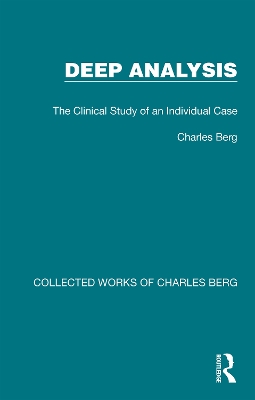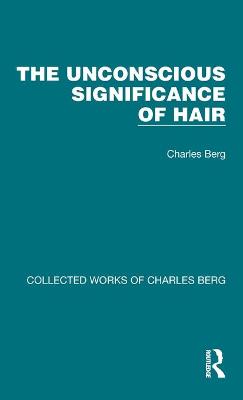Collected Works of Charles Berg
3 total works
First published in 1947, with a second edition in 1950, the original blurb reads: 'This is an illuminating description of a complete Freudian analysis of a single case. From the first interview to the last the reader’s attention is engrossed with the almost-normal personality of the individual who is being analysed. We see his thoughts, philosophy, and emotions gradually unfolding under the application of analytical technique (lightly explained in the second chapter), until – and this is where the book is such a tremendous advance upon the psychological novel – the very springs and mechanisms of his psychic pattern and emotional structure are abundantly and lucidly revealed. We see and understand the hidden depths of the nature of the human mind, and obtain introductory insight not only into normal mental functioning, but into almost all its psychopathic aberrations including frigidity, impotence, love, hate, hysteria, obsessions, and even paranoia and schizophrenia – all in minor degrees an integral part of normality.
In spite of this the book is light reading and, though particularly instructive to doctor and professional psychologist, understandable to the average intelligent layman.'
This book is a re-issue originally published in 1950. The language used is a reflection of its era and no offence is meant by the Publishers to any reader by this re-publication.
Originally published in 1959, the blurb read: ‘Dr Berg has made a comprehensive survey of the Wolfenden Report in regard to homosexuality and illustrated his comments with extracts from case material. He points out that whereas public opinion has so far lagged behind the Committee’s main recommendation, scientifically far from being an advance the report may be considered lamentably reactionary. He says; "Perhaps this report is a good lesson in the futility of trying to unravel and assess psychological phenomena without first removing the obstacles to understanding their meaning". The author deals with the subject in his usual forthright, witty and persuasive style, which is easily enjoyed by psychiatrist and layman alike, and the book should be welcomed by all who seek to understand this controversial topic.
Later chapters include a discussion of the wider implications of punishment and a new theory of the fundamental nature of Anxiety and Fear.’ Today it can be read and enjoyed in its historical context.
This book is a re-issue originally published in 1959. The language used is a reflection of its era and no offence is meant by the Publishers to any reader by this re-publication.
Originally published in 1951, the implications of this book were thought to be far wider and deeper than its title suggests.
'Hair-activities are chosen merely as a sample of uncritically accepted human behaviour. The author then proceeds to examine them very carefully in the light of dreams, anthropology, folklore, symptoms and perversions. He shows them to be an expression of instinct-driven tensions and conflicts. The popular illusion that they are determined by reason or adaption to reality is exploded.
The corollary is inescapable; if in this innocent particular our thoughts and behaviour are symptomatic expressions of an unconscious conflict or complex, how much more psychopathic would our more significant ideas, beliefs, institutions, customs and laws prove to be on similar detailed investigation! Is, therefore, our self-expression in life and civilization nothing more than a symptom, identical in its source and mechanism with the symptoms of nervous and mental illness?
The book is really a psychiatric criticism of normality based upon a chosen item of typically normal behaviour. It is, however, written in a way that will be easily understood by every intelligent reader.'
This book is a re-issue originally published in 1951. The language used is a reflection of its era and no offence is meant by the Publishers to any reader by this re-publication.


